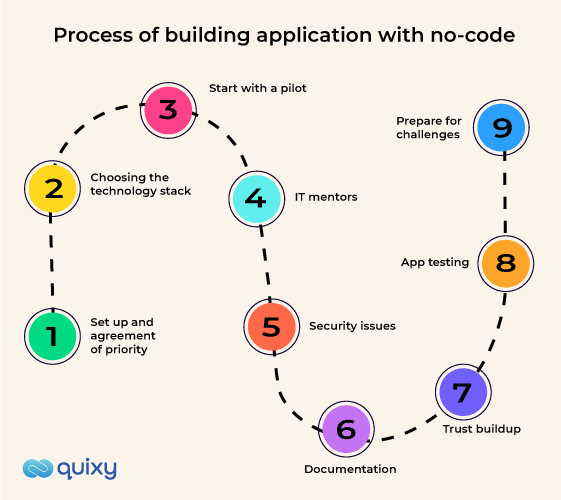
This article was first published on e27.
A growing number of businesses are turning to low-code and no-code platforms in order to enable IT and business staff the opportunity to build apps. As a result, many businesses find these platforms to be a vital element of their operation.
Nearly nine out of ten no-code platform users globally claimed their roles are crucial to business success, saying that they directly enhanced business performance in a survey of 318 customer firms worldwide.
The study concluded that no-coding apps enable a more comprehensive range of people to work on development. Women make up nearly half of the users; four out of ten are Millennials, and seven out of ten work in non-IT areas.
Defining No-Code
Software design solutions that allow non-technical users to run software without creating a single line of code are called no-code frameworks.
These tools visualize offer user-friendly interfaces and drag-and-drop capabilities to help you visualize the implementation process and express your general business logic.
It’s a programming platform that uses a visual development interface to allow non-technical users to construct apps by dragging and dropping software components to create a complete application. No code does not necessitate any prior coding knowledge on the user’s part.
Also Read: What do No-Code Platforms do for Traditional Developers?
Process of building application with No-Code

1. Set up and agreement of priority
Consider no-code applications as a viable alternative to traditional IT requests in the areas of your business where there are problems or critical difficulties. Seek input from other leadership team members and the workforce as a whole.
2. Choosing the technology stack
Despite the fact that no coding platforms are meant to be used by non-programmers, they must integrate seamlessly into your existing IT architecture.
3. Start with a pilot
Beginning with a small pilot project that affects a single company procedure is always the wisest course of action. It is essential to conduct pilots so that you may learn from your mistakes as you go along.
4. IT mentors
IT executives have a wide range of experience in dealing with various groups’ security, integration, and user adoption issues. Leaders must assign IT liaisons to teams using no-code tools so that they can monitor the work of individuals developing business apps and keep in touch with IT regularly.
5. Security issues
A continual relationship between IT and line of business builders is needed to ensure that organizations can maintain a safe infrastructure while supporting the creation of no-code apps. When it comes to IT oversight, it depends on the nature of the apps being developed and how tightly they are linked to other departments’ activities.
6. Documentation
The first step in implementing no-code tools is for IT and business leaders to collaborate on a policy that identifies the various parties involved as well as the processes and technology that will be required. On the other hand, no-code developers should establish detailed program roadmaps for their prospective consumers.
7. Trust buildup
As a result of allowing staff the power to design applications, leaders must refrain from micromanaging while encouraging regular communication and updates.
8. App testing
To begin even a simple pilot program, leaders must implement a rigorous quality assurance methodology. To ensure that new apps are fully functional, they should be put through their paces by actual users from the organization. Moving to a real-time production environment for the apps should only be done.
9. Prepare for challenges
Developing no-code software is trial and error, and organizations will likely expand on their initial successes over time. Leaders can focus on more strategic matters if workers have the tools to handle some of their difficulties.

Does investing in No-Code make sense?
In terms of business, what are the advantages of no-coding? In addition to time savings, cost savings, and a single platform, WEM’s no-code creation methodology delivers value to the firm when developing business-critical applications.
Several benefits of no-code software development have been discussed:
- It’s best to concentrate on the app’s core without coding. You will spend more time with your clients and create something they will appreciate using a no-code application-building platform, focusing on the application’s core.
- No-code architecture tools simplify front-end UI design by providing rich models that can be used and customized. You don’t have to start from zero in UI/UX, so you can spend more time with your clients and improve your app experience.
- 80 percent lower development cost is guaranteed in no-code. Conventional and DevOps software development methods are expensive. Recruit technical skills higher up. Front-end and back-end developers, security consultants, financial experts, and software and cloud professionals may be needed. No-code applications encapsulate front-end and back-end development. One back-end or front-end developer can build the stack. They can evolve faster without starting from scratch. Building on a network eliminates the need to consider cases, databases, and security.
Also Read: Top 12 Benefits of No-Code App Development
Final thoughts
There is no way the no-code wave is stopping. For businesses to stay afloat in the ever-evolving world, starting with no-code adoption can pave the way for survival.
According to Gartner, by 2025, 70 percent of new applications developed by enterprises will use no-code or low-code technologies. Jump on this joyride!
Login
Please login to comment
0 Comments
Oldest















